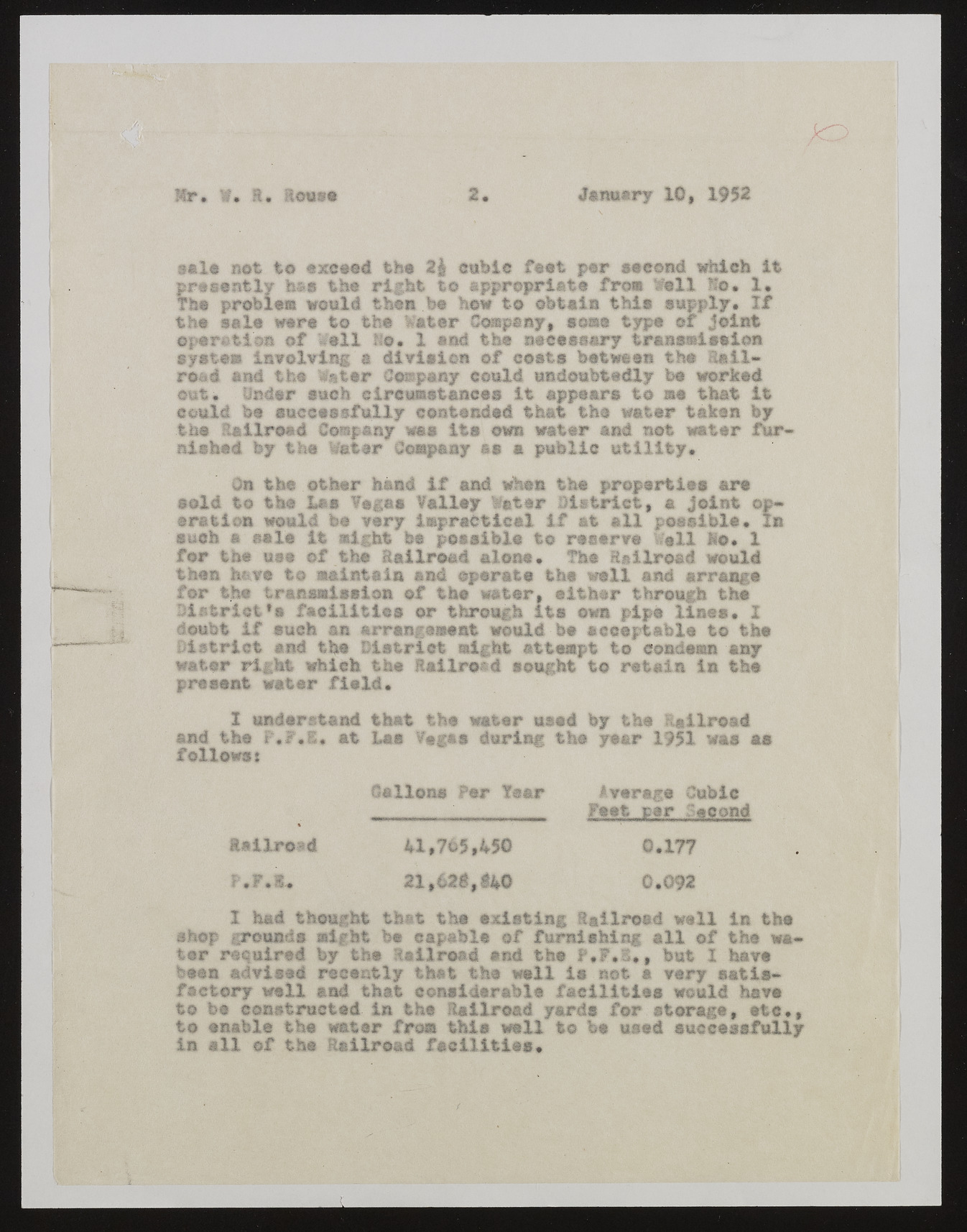Copyright & Fair-use Agreement
UNLV Special Collections provides copies of materials to facilitate private study, scholarship, or research. Material not in the public domain may be used according to fair use of copyrighted materials as defined by copyright law. Please cite us.
Please note that UNLV may not own the copyright to these materials and cannot provide permission to publish or distribute materials when UNLV is not the copyright holder. The user is solely responsible for determining the copyright status of materials and obtaining permission to use material from the copyright holder and for determining whether any permissions relating to any other rights are necessary for the intended use, and for obtaining all required permissions beyond that allowed by fair use.
Read more about our reproduction and use policy.
I agree.Information
Digital ID
Permalink
Details
More Info
Rights
Digital Provenance
Publisher
Transcription
k z M r, W. a. Rons# 2. January 10, 1952 not to exceed the 2| cubic foot p e r second which it presently h&s the right to appropriate from Well fio, 1 • The problem would then be how to obtain this supply. If the sale wore to the Water Company, some type of joint operation of Well No* 1 and the necessary transmission system involving a division of costs between the Railroad and the Veter Company could undoubtedly be worked out. Under such circumstances it appears to as that it could be successfully contended that the water taken by the Railroad Company was ita own water and not water furnished by the Water Company as a public utility. On the other hand if and when the properties art sold to the Lae Vegas Valley ^eter District, a joint operation would be very impractical If at all possibla* In such a sale It might be possible to reserve ell Mo, 1 for the use of the Railroad alone. The Railroad would then have to maintain and operate the well and arrange for the transmission of the water, either through the District's facilities or through its own pipe lines. X doubt if such an arrangement would be acceptable to the District 5>nd the District might attempt to condemn any water right which the Railroad sought to retain in the present water field. I understand that the water used by the Railroad and the F.f.£• at Las Vegas during the year 1951 was as follows* Gallons Per Tear Iverage Cubic . Feet par "econd Railroad 41,765,450 0.177 F.F.S. 21,62*,*40 0.092 1 had thought that tha existing Railroad well in the shop grounds might be capable of furnishing all of the water required by the Railroad and the r.F.D,, but I have bees advised recently that the well is not a very satisfactory well and that considerable facilities would have to ha constructed In the Railroad yards for storage, etc., to enable the water from this wall to be used successfully in all of the Railroad facilities*

